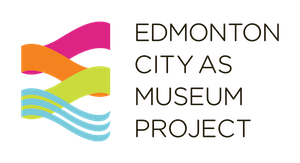By Fabiola Muñoz Carrillo
Translation is often viewed as the mechanic process of converting a text from one language to another. If you are bilingual, I know you have tried to translate. Wasn’t it one of the most difficult things you have experienced in front of the computer? However, in the times of Google, well… translation just happens. I personally like to trust human talent. Translators can maintain the same tone and style of the original text and they can capture idiomatic expressions, colloquialisms, cultural and historical references to produce a translation that feels natural and culturally relevant. Try AI to give you all of that in a translation.
Why a text is translated is also another question that seems to be simple to answer. If we do a quick internet search, it’s easy to find lots of pages that offer a wider definition of the act of translating and the different kinds of translation available. The most common reason to translate a text is to enable communication, so more people can read the same text. But why translating a text? Just to get more readers, well, in essence, yes, but what is the significance of having those readers? To explore the importance of translation, consider why ECAMP translated the digital exhibit “And Still We Rise, A Black Presence in Alberta”.
“And Still We Rise, A Black Presence in Alberta” highlights the history and contributions of Black communities in Alberta from the 1800s to the early 1970s. The website showcases individuals from those communities who have been underrepresented by narrating stories of resilience, activism, racism and discrimination. The exhibit also aims to connect the past with the present by demonstrating how historical patterns of marginalization and exclusion continue to affect Black communities today. The French translation of the website offers the French speaking community a challenging narrative that questions the dominant telling of history while promoting cultural understanding.
Language is often considered as a window to the past and to another culture, so translation gives new light to understanding how the actions of the past shaped a society, for example,
En plus du tollé soulevé en Alberta, le gouvernement du Canada recourait de plus en plus à des moyens « officieux » d’empêcher les Noirs d’immigrer au Canada. Les agents d’immigration faisaient en sorte de ne pas envoyer d’information sur le Canada aux Noirs. Les agents principaux du Canada ont approché des chefs religieux au sein de communautés noires des États-Unis pour qu’ils se prononcent contre l’immigration dans les prairies. Le climat froid et le manque de nourriture connue étaient souvent cités comme raisons pour ne pas migrer vers le Canada.1
As we learned from the quote, there was a systemic opposition to the migration of Black people into Alberta, along with unofficial ways to prevent it. Today the descendants of the initial group of African American homesteaders who arrived in Edmonton in 1908 can identify both the facts and the places of their family’s origins and the hardships they faced upon their arrival in their new home.
Alberta has a significant Francophone population particularly in Edmonton, where French speakers and newcomers come from all over the world. According to the Census of Population2, French speaking Edmontonians and newcomers come from several African countries including République démocratique du Congo, Cameron, Rwanda and Côte d’Ivoire.
Thanks to French translations of the “And Still We Rise, A Black Presence in Alberta” exhibit, newcomers from French speaking communities can learn about the experiences of the men, the women and the children who came before them. French speakers read these stories in their own language, highlighting the lives of individuals who lived through racism and who, through their actions and examples, successfully re-shaped their community and society. This exhibit offers an opportunity to connect directly to the protagonists – whether through pictures, interviews or handwritten letters – how Black Albertans resisted discrimination and how they gained the right to be included into a larger society. The exhibit, along with its new French translations, will deepen the understanding of the formation of the Black community and their contributions to the social and cultural landscape in Alberta over many decades. This is a great example of how translations help to share and preserve heritage.
Fabiola Muñoz Carrillo helped create the French translation of the ECAMP digital exhibit “And Still We Rise, A Black Presence in Alberta.” French translation of the exhibit materials was done by Nicole Giguère.
1 https://citymuseumedmonton.ca/fr/2025/05/01/opposition-soutenue-a-limmigration-noire/
2 https://www12.statcan.gc.ca/census-recensement/index-eng.cfm?MM=1

